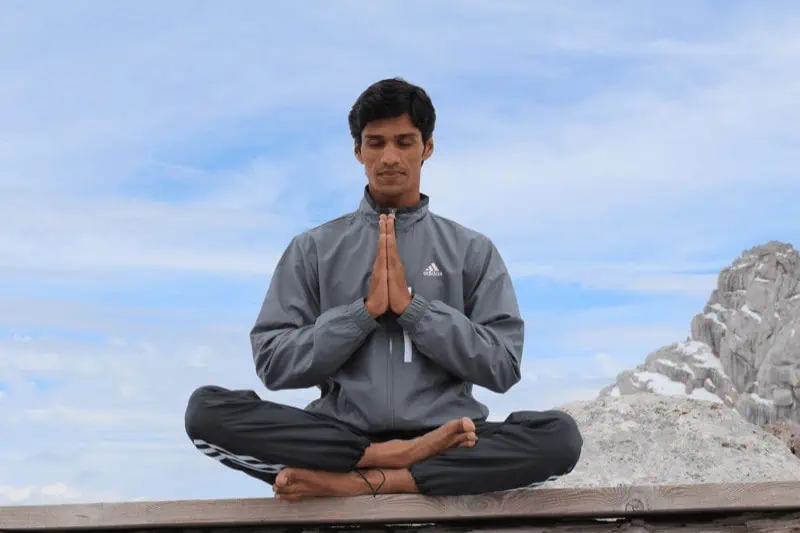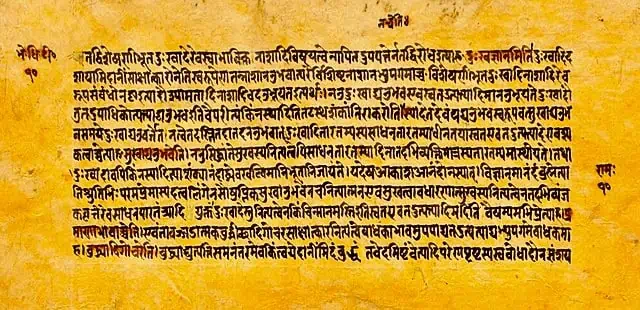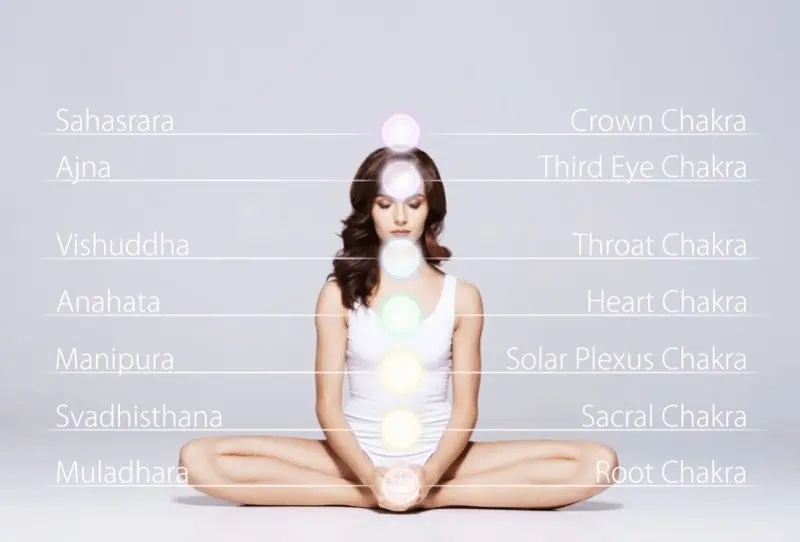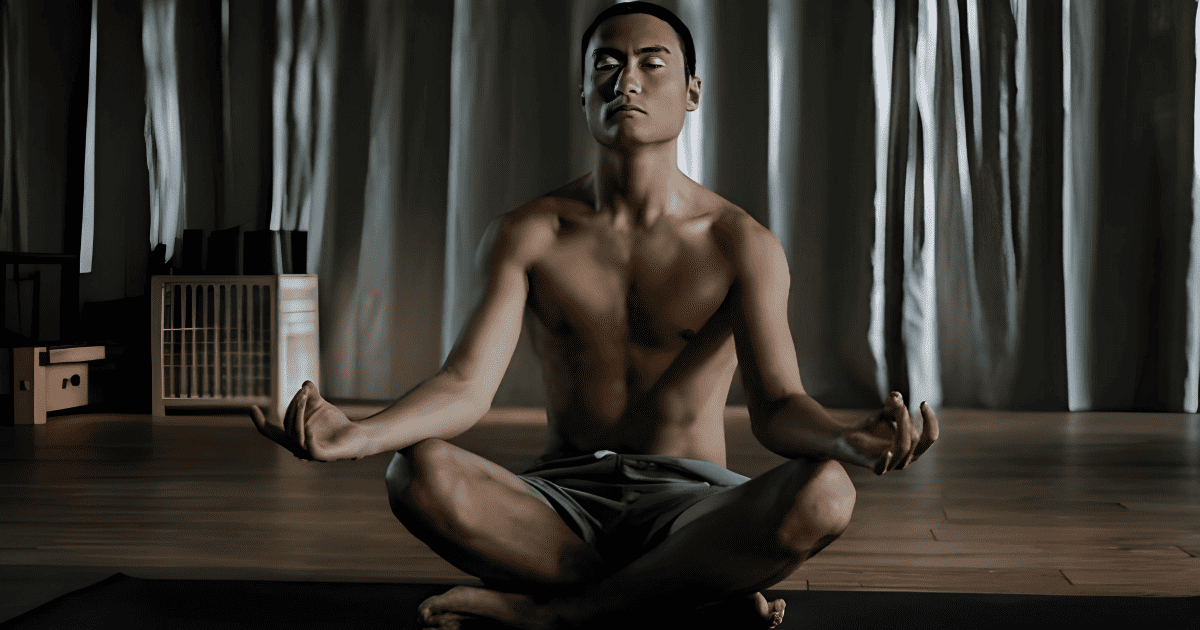Stepping right into a yoga studio whenever you’re a newbie will be intimidating for a lot of causes. Lengthy earlier than I grew to become a yoga instructor, I keep in mind feeling overwhelmed by all of the Sanskrit phrases, yoga phrases, and sophisticated pose names after I began taking yoga courses.
I knew that yoga might be a profound and transformational expertise. But, I didn’t perceive what the instructor meant when she directed us to make use of “ujjayi breath” or “interact mula bandha.” I felt like I used to be lacking out on the entire yoga expertise.
Diving into follow with out greedy widespread vocabulary, like mudra, bandha, and asanas, is like navigating a brand new metropolis and not using a map; it’s doable however unnecessarily difficult. Familiarizing your self with key phrases reminiscent of yama, sutra, and solar salutation may help you are feeling extra snug and assured whenever you enter a room stuffed with yogis able to stream.
After all, any efficient yoga instructor ought to clarify a Sanskrit phrase in a manner all college students will perceive. However figuring out some yoga vocabulary earlier than you attend a category helps bridge the hole between wide-eyed novices and seasoned yogis, turning advanced ideas and philosophies from the yoga sutra into significant experiences that resonate each on and off the mat.
Understanding yoga vocabulary transforms mere phrases into highly effective instruments that unlock a extra profound, cohesive follow. Let’s demystify a few of these widespread yoga phrases collectively.
Yoga Vocabulary Glossary for Newcomers
Yoga is a wealthy cultural follow with particular, technical terminology, like mudra, postures, meditation, and chakra. Let’s break down some key yoga phrases that may have you ever talking “yogi” very quickly!
Asana Fundamentals
Asana refers back to the bodily postures in yoga, a lot of which give a strong exercise on your physique. Every place has a particular function in strengthening or stretching muscle tissues, aligning chakras to open power channels, or selling rest.
Right here is a few asana-focused yoga vocabulary that can assist you navigate your first yoga class.
- Mountain Pose (Tadasana) is a elementary yoga posture practiced by standing tall with toes collectively and arms by your facet. It begins and ends many yoga sequences, such because the Solar Salutation.
- Downward Going through Canine (Adho Mukha Svanasana) is a pose that brings the physique into an inverted place, fingers and toes separate, and hips towards the ceiling within the form of an upside-down “V.”
- Chaturanga (shortened model of its full identify, Chaturanga Dandasana) is a strength-building pose that fires up your entire physique as you decrease midway from a excessive plank place.
- Warrior Pose (Virabhadrasana) is one other asana you’ll stream by way of steadily in a Vinyasa or Hatha yoga class. It’s like a excessive lunge together with your again foot barely out-turned, arms reaching over your head. Within the variation Warrior II, your torso opens to the facet, and your arms lengthen out out of your shoulders,
- Corpse pose (Savasana) is how we finish most yoga courses, mendacity flat in your again together with your eyes closed. It’s a time for integration and rest.
- Solar Salutation (Surya Namaskar) is a regular sequence in Vinyasa yoga that makes use of a number of poses above. Test it out in our article right here.
Namaste Nuances
Namaste is among the most acknowledged and repeated yoga phrases, nevertheless it’s greater than only a factor to say to a different yogi on the finish of a yoga or meditation class. It’s an act of respect imbued with non secular connection.
If you carry your palms collectively at your coronary heart heart (anjali mudra), bow your head, and say “Namaste“ in your yoga class, you acknowledge and honor the soul shine in another person.

Drishti Pointers
Have you ever ever tried focusing your eyes whereas holding a yoga pose, watching one spot as you steadiness? That’s drishti. This targeted gaze, a elementary approach in yoga, will increase your focus and is an important device for attaining steadiness throughout tough poses.
If you focus your drishti, you additionally focus your power to maintain your thoughts from wandering off when you have to keep put.
- Nostril Tip (Nasagrai Drishti): A yoga and meditation approach specializing in the nostril tip for focus.
- Hand Thumb (Hastagrai Drishti) Approach: Eyes fastened on the hand throughout yoga poses like Warrior II.
Figuring out even a couple of important items of yoga vocabulary, just like the names of widespread postures, will aid you really feel extra assured whenever you stroll into your subsequent class.
Bear in mind these phrases subsequent time you roll out your mat on your follow. They’ll assist progress your approach, channel your power, and join with others locally.
Significance of Sanskrit in Yoga

Sanskrit connects us to yoga’s roots. It preserves yoga’s coronary heart by way of sound and that means. Though many yoga academics use the English names of yoga postures, studying the right Sanskrit phrases helps maintain the traditional traditions of the follow.
Historical Language Connection
Sanskrit is sort of a bridge linking at present’s yoga fanatics to historical knowledge. Think about chatting with somebody from hundreds of years in the past. That’s what occurs whenever you use Sanskrit in yoga.
Preserving Conventional Sounds
Sanskrit is a classical language primarily utilized in non secular follow, philosophical texts, and historical literature. It’s not broadly spoken at present, so the sounds are distinctive to many Western ears. Pronunciation and emphasis make an enormous distinction in spoken Sanskrit.
So, whenever you study a brand new Sanskrit phrase, lookup its correct pronunciation to sound like an actual yogi.
Deepen Your Apply with Sanskrit Knowledge
If you study Sanskrit, it may well supply new views and interpretations of your yoga follow. Contemplate these potential conditions:
- In a yoga class, a brand new pupil learns the that means of the time period asana as “seat” or “posture.” Now, she will extra simply acknowledge the names of recent poses throughout the class.
- You uncover the Sanskrit phrase “Pranayama” interprets to “life drive regulation.” Impulsively, your breath holds extra energy. If you follow pranayama strategies, your respiration turns into a acutely aware act to increase your life power stream.
These examples present studying Sanskrit isn’t simply educational—it modifications your entire yoga class expertise and provides a profound connection to your follow.
Deepening Philosophical Understanding
Yoga is greater than a bodily motion follow of bringing your physique into totally different poses. It’s a complete philosophical system with historical roots. Familiarizing your self with a few of these philosophical ideas can take your yoga to the subsequent degree, from a bodily exercise to extra of a non secular follow.
A few of these yoga phrases you’ll have heard earlier than. However do you know their that means?
- Karma: the regulation of trigger and impact, like a cosmic steadiness.
- Karma Yoga: the act of doing good with out anticipating something in return.
- Dharma: responsibility or righteousness, appearing in response to ethical rules.
- Tantra: a follow that expands consciousness and connection to the divine.
Studying from Sacred Texts
The Yoga Sutras are a group of teachings by the guru Patanjali, which many yoga academics reference.
- Yoga Sutras: Contemplate them an instruction handbook for working towards yoga and life typically.
- Yama: the Yoga Sutras clarify the 5 yamas as moral tips for residing life.
- Guru: in response to Patanjali, a non secular instructor or information.
- Ashtanga: eight limbs (literal translation), referring to the eightfold path of yoga outlined by Patanjali within the Yoga Sutras.
Studying these phrases helps you perceive the historic and philosophical context of yoga.
Anatomy and Alignment in Poses
Yoga is all about steadiness and concord in every posture. Yoga anatomy applies to your bodily and ” delicate ” our bodies — your power stream and life drive.
Know Your Energetic Physique
Many various yoga poses and respiration workout routines are sensible instruments for cleaning and shifting power in your physique, retaining you wholesome and balanced. Listed below are a couple of important phrases to know.
- Nadi: power channels in your physique the place your life drive power flows.
- Chakra: a swirling power heart positioned within the physique, located alongside the backbone.
- Ajna chakra: one of many seven fundamental chakras, known as the Third Eye chakra.
- Prana: the important power that sustains all life.
- Bandha: contracting particular muscle tissues within the physique to manage power stream; mula bandha, for instance, is your pelvic ground.
Anatomical Clues for Asanas
In a yoga class, figuring out your bones out of your muscle tissues could make or break a pose (hopefully not actually!). When your yoga instructor talks about firing up these glutes, partaking the pelvic ground (mula bandha), or aligning the backbone throughout class, figuring out some primary anatomical lingo helps you comply with the cues extra successfully.

Pranayama: Breath Management Methods
Many instructors embrace Pranayama, the artwork of breath management, of their courses. Typically, your instructor might lead you thru a pranayama breath follow in direction of the tip of the category. In sure types of yoga, a particular sort of respiration approach accompanies the motion follow.
Ujjayi Breath
Ujjayi Breath is a standard respiration approach, particularly in Vinyasa Yoga. Its literal translation is “victorious breath,” however you would possibly hear it known as “ocean breath,” because it mimics the sound of light waves flowing out and in.
To attempt Ujjayi respiration, maintain your hand in entrance of your face. Together with your mouth open, exhale as in case you have been fogging up a mirror together with your breath. Breathe in by way of your nostril, then shut your mouth. As you exhale once more, hold the identical oceanic sound in your throat.
Ujjayi breath generates inside warmth, and when paired with a stream of postures, it will increase mindfulness and sharpens focus.
Kumbhaka Breath Retention
One other fashionable pranayama train utilized in meditation is Kumbhaka or breath retention. This respiration approach is easy and protected for all ranges of scholars.
To follow Kumbhaka breath retention, sit comfortably on the ground or in a chair. Take a deep breath in, pause, and maintain for a couple of seconds. Then, exhale slowly and steadily. Proceed respiration on this manner, including a pause after every inhale.
Working towards the Kumbhaka breath retention cultivates mindfulness, improves focus, and calms the nervous system.
Pranayama in Yoga Practices
Incorporating these pranayama strategies into your yoga periods can remodel your follow. The respiration workout routines are usually not nearly transferring air out and in; they’re about transferring power —prana —all through the physique.
Whether or not you’re seated in meditation, flowing by way of Warrior II, or mendacity in savasana on the finish of your yoga session, these strategies can deepen mindfulness and amplify the advantages of your yoga follow.
Breath by breath, pranayama guides us towards inside stillness, the place each inhale meets intention, and each exhale releases resistance inside our yoga follow.
Mudra and Mantra
The next two widespread yoga phrases typically come up in meditation periods. So, let’s undergo a crash course in every of those yoga practices so that you’ll be prepared to maneuver your yoga follow past the bodily asanas!
Mudra-101
Merely put, a mudra is a gesture made with the fingers or fingers to manage power stream inside the physique and focus the thoughts throughout meditation. Listed below are the 2 mudra you’ll almost certainly encounter in a yoga session.
- Anjali Mudra: some of the well-recognized yogic gestures during which you carry your palms collectively at your coronary heart heart.
- Gyan Mudra: a gesture representing the union of particular person and common consciousness, made by touching the ideas of the thumb and index finger collectively and lengthening the opposite three fingers.

Mantra Meditation
In yoga, a mantra is a repeated phrase, phrase, or sound throughout meditation or chanting. A mantra could be devoted to a particular deity, like a prayer. Then again, it could be only one easy syllable used to focus the thoughts and promote a state of focus.
The most straightforward mantra of all is one you’ve in all probability heard earlier than: Om. You will have even chanted it together with your fingers in Anjali Mudra on the finish of a yoga session. This small however mighty mantra comprises all of the sounds of the universe in a single syllable!
One other well-known mantra combines Om with the Sanskrit time period shanti, that means “peace.” If you shut your eyes and chant, “Om, shanti shanti om,” you might be invoking a prayer for peace for all residing beings.
When you’re curious to attempt a mantra meditation, try YogaDownload.com. They’ve many fascinating on-line yoga and meditation courses that incorporate mantras and sound therapeutic.
Know Your Yoga Model
If you’re a category schedule for a yoga shala, you would possibly really feel overwhelmed all of the several types of courses. Right here’s a fast cheat sheet so you realize which fashion of yoga will be just right for you.
- Vinyasa Yoga: Additionally known as Vinyasa stream, synchronizes actions with respiration. Energy Yoga and Baptiste Yoga are examples of area of interest kinds of Vinyasa.
- Hatha Yoga: A standard, typically light fashion of yoga that focuses on postures and breath management to domesticate steadiness and concord within the physique and thoughts.
- Ashtanga: A structured and rigorous fashion of yoga that follows a particular sequence of poses.
- Scorching Yoga: Any yoga practiced in a heated house to encourage flexibility; Bikram Yoga is a particular fashion of sizzling yoga.
- Iyengar Yoga: Named after B.Okay.S. Iyengar, who created this specific yoga fashion to concentrate on alignment, particularly the backbone.
- Restorative Yoga: A mild type of yoga utilizing props like blankets and blocks to advertise deep rest.
- Yin Yoga: A therapeutic sort of yoga that works with power channels within the physique known as meridians and focuses on deep tissues like fascia.
Embark on a journey of wellness with the Manduka yoga mat, your versatile companion for exploring quite a lot of yoga types.

Manduka PRO Yoga Mat – Premium 6mm Thick Mat, Eco Pleasant, Oeko-Tex Licensed, Freed from ALL…
Integrating Yoga Language
Taking over yoga is about greater than mastering motion — you’ll be studying a complete new language. However don’t sweat it! With this glossary of important yogic and Sanskrit phrases, you’ve already bought a head begin.
So, what’s subsequent in your yogic journey? Hold working towards, hold exploring, and let these phrases be your guideposts alongside the best way. Whether or not you’re flowing by way of Vinyasa or mastering the intricacies of alignment, communicate the language confidently.
And hey, in case you ever stumble over a phrase or a pose identify (attempt saying Eka Pada Rajakapotasana thrice quick!), that’s all a part of the method. Share your experiences with fellow yogis, ask questions when doubtful, and hold including to your yoga vocabulary — one pose, mudra, and mantra at a time.
FAQs
FAQ 1: What does “Namaste” imply in yoga?
Namaste” is a respectful greeting in yoga that interprets to “I bow to you.” It acknowledges the divine spark inside every particular person and is usually used firstly or finish of a category as an indication of gratitude and connection.
FAQ 2: Can understanding Sanskrit improve my yoga follow?
Completely! Whereas not obligatory, studying Sanskrit can deepen your appreciation for yoga’s historical past and philosophy. It connects you to the normal roots of every pose and might enrich your total expertise on the mat.
FAQ 3: Are there any assets for novices to study yoga terminology?
Sure! Many yoga studios supply newbie courses targeted on terminology. On-line platforms present intensive glossaries and tutorials that may assist familiarize you with primary yoga vocabulary used throughout follow.
FAQ 4: What ought to I do if I discover sure yoga phrases complicated throughout class?
When you’re confused by any phrases throughout class, don’t hesitate to ask your teacher for clarification after the session or look them up later to enhance comprehension for future practices. As a yoga instructor, I can affirm that we love being requested about yoga vocabulary and are completely satisfied that can assist you perceive!
FAQ 5: Is it essential to chant throughout yoga periods?
Chanting is just not vital however could be a highly effective device for focusing consideration and setting intentions throughout meditation. Many yoga courses shut with a collective chant of the mantra “Om.” In case you are uncomfortable with chanting or unable to vocalize, you’ll be able to repeat the mantra internally to your self.
FAQ 6: Does mastering breath management strategies require information of particular terminology?
Whereas not important for novices, figuring out particular pranayama phrases will be useful as you advance in your follow. These strategies are important in controlling power stream all through your physique throughout meditation and asanas.

